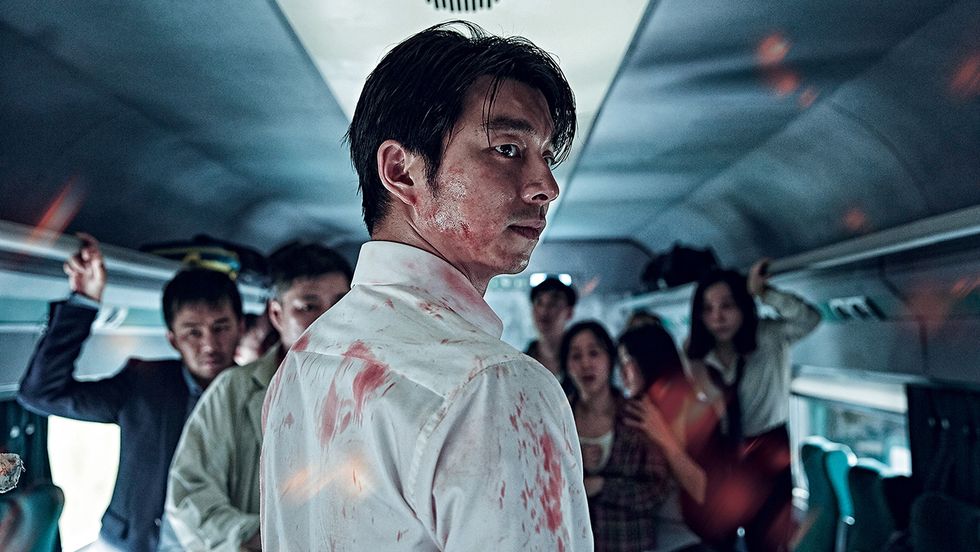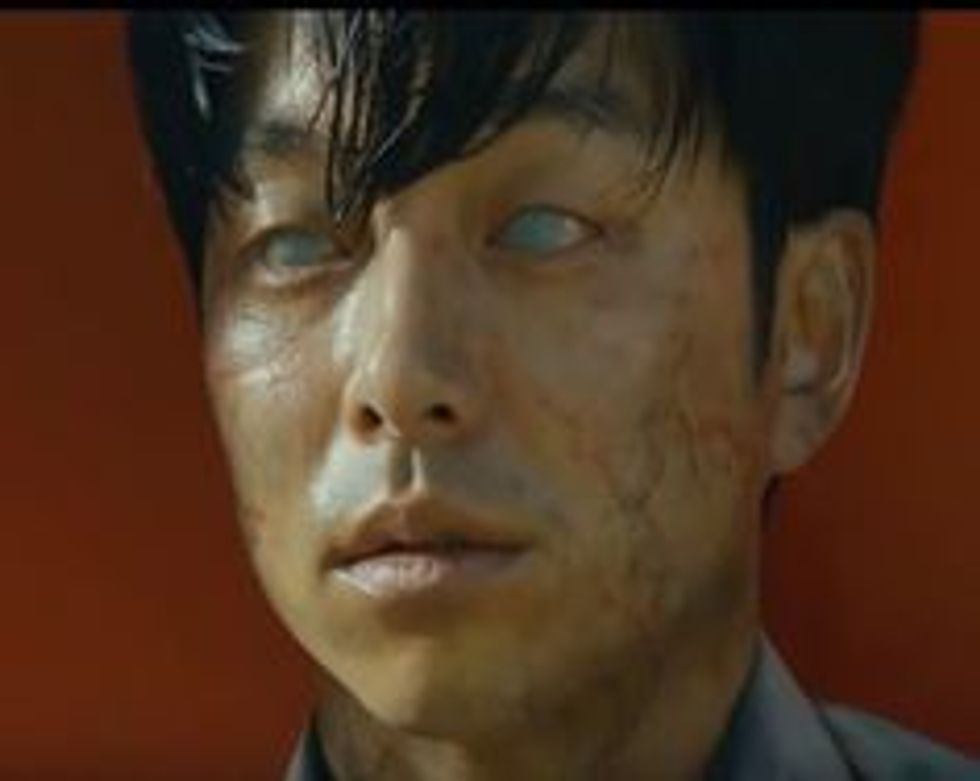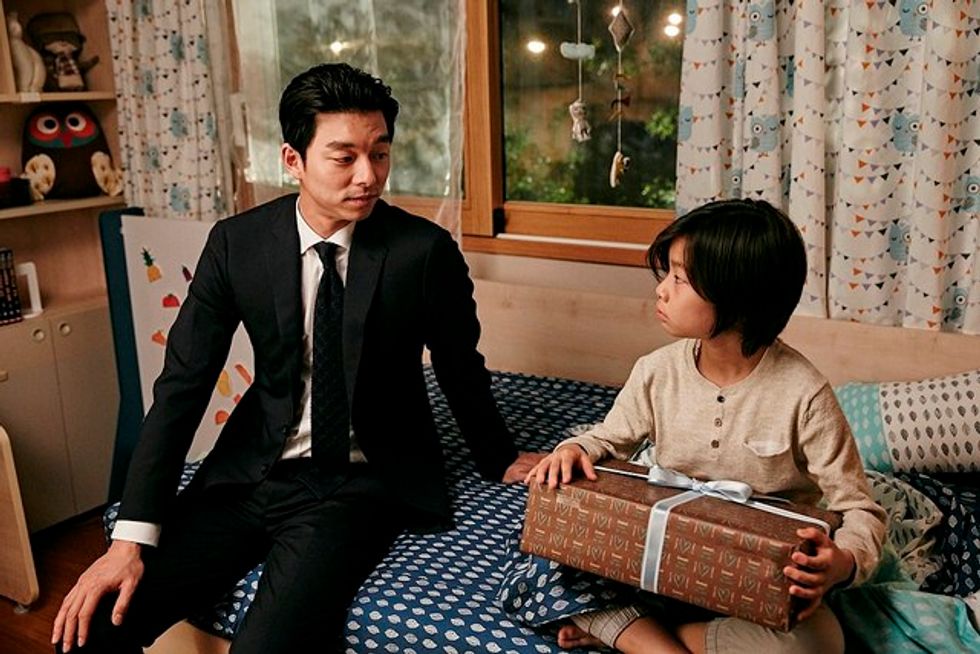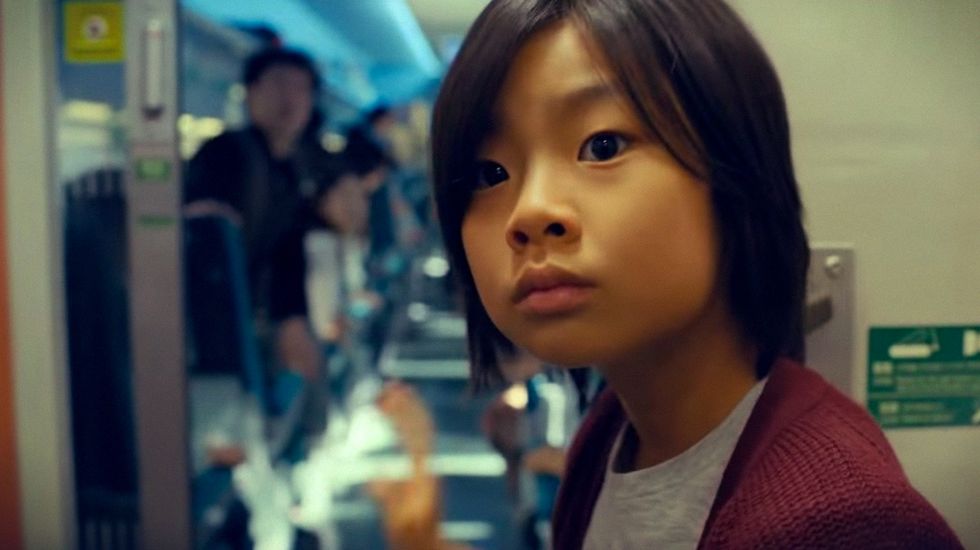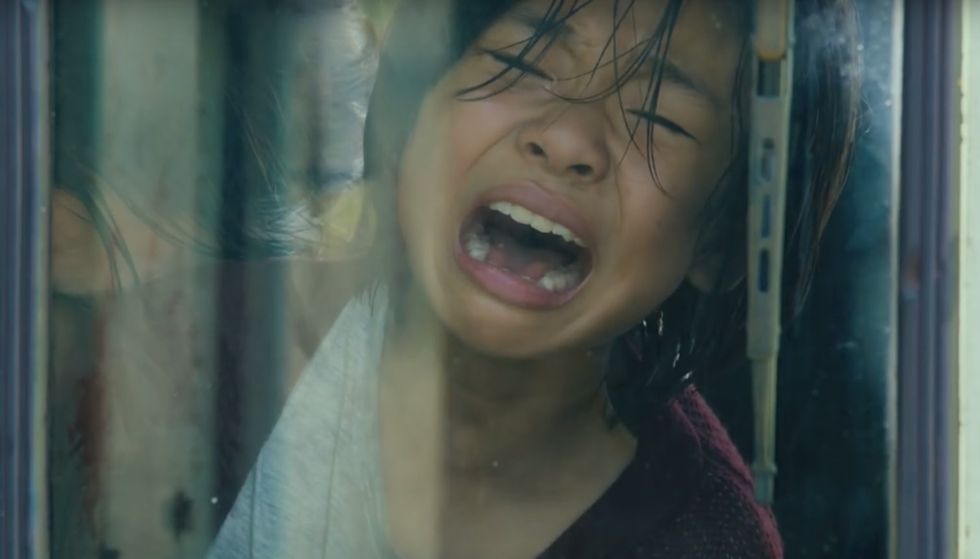A ghastly bleeding wound caused by a zombie’s bite, the onset of convulsions and finally, the change in the eyes. On the "Train to Busan", one can tell when victims become predators as the eyes, which moments earlier showed kindness or fear, turn sinister and opaque. The image is powerful. Associative. The audience will remember those eyes.
Evoking the makings of a Hollywood blockbuster, "Train to Busan" is a Korean horror thriller in which a hero overcomes many challenges to save everyone, but the story goes deeper. Travelling to Busan with her father, Soo-An (Kim Soo-Ahn) finds herself trapped on a train with infected humans who have turned into zombies and are attacking everyone in sight. Seok-Woo (Gong Yoo) is a divorced single parent focused on his career rather than on his only child. The meaning of the film lies in the truth that the real demons to be conquered are in fact the demons within. Seok-Woo must overcome his egocentric nature and think only of protecting his daughter. Soo-An must survive, not with super-powers to fight off the zombies, but with courage.
One important aspect of the overall meaning of the film is how it takes a crisis for the love between a father and daughter to find expression. It is interesting to observe how the filmmakers (Yeon Sang-ho and Lee Dongha) shape this aspect by keeping the audience connected with Soo-An, making them want to know where she is at all times, what she is feeling, and what is going to happen to her. Without this powerful hook, "Train to Busan" would degenerate into yet another zombie melodrama.
We are first introduced to Soo-An in her bedroom when her father walks in, pretending to remember her birthday. The mise-en-scène presents the dark interior of a room, where the lights are off. A small lamp in the distance shows a desk and a dresser in the background, but not in focus. A mid-shot captures the silhouette of Seok-Woo, shoulders to feet, standing in the doorway as he is backlit from the light in the hallway. Seok-Woo is tall with a slim build. In the foreground, there is a small figure covered in a blanket and hunched on the single bed near the window. A child’s voice is heard. A close-up shows Seok-Woo’s face, showing a clean-shaven countenance of a man in his thirties, with a neat haircut. This is followed by a close-up of the hunched figure. Seok-Woo is seen switching on the light, creating a warmly lit room. A small girl emerges from under the blanket and sits up, but keeps it tightly drawn around her. All that is apparent is an innocent face and short, dark hair. A mid-shot captures father and daughter seated on the bed, Seok-Woo in his formal business suit. Close-ups switch between both characters as they talk. In a mid-shot we see Seok-Woo handing her a birthday gift as Soo-An sheds the blanket, overcome by curiosity. She is dressed in her pajamas, and there is a close-up of her expressionless face. The camera vertically pans down to a close-up of the gift: a Wii box. The scene cuts to a medium shot of both figures, with Soo-An’s face revealing no joy. The camera angle shows the father’s face staring at her with the unspoken question for which even the audience wants an answer: Why is Soo-An disappointed? The camera angle changes this time showing the back of the father’s head with Soo-An’s face in full view. She slowly raises her head as we can predict that the answer lies in the place where her eyes are looking. The father follows her stare and the scene cuts to a medium shot of a table in another part of the room. The camera vertically pans slowly from bottom to top, displaying a Wii box which is already there.
There is an aura of stillness which surrounds Soo-An. It serves to set her apart throughout the high-energy scenes in the film. There is no other sound in the scene except for the slightly awkward conversation, which emphasizes that they rarely talk. It also shows Soo-An has a quiet, isolated life. The child clutches a blanket showing her insecurity since her parents’ divorce. The mid-shots of father and daughter show a physical distance between them, while their attire represents two different worlds.
Soo-An’s face remains without expression. She makes no eye contact with her father, except very briefly. It is when he finally looks at what she is seeing, that he realizes his present was useless for her because he knew so little about her life. Instead of choosing to let Soo-An simply say she already had a Wii box, the director uses the opportunity to show the father the importance of literally seeing things from his daughter’s point of view.
Seok-Woo makes amends by taking Soo-An to meet her mother in Busan. On the train, the quiet, diminutive figure stands apart as the only child on board. Soo-An is chosen to be the silent observer in the film. The audience gains insights from what she witnesses. One extreme close-up shows Soo-Ann’s eyes peering through the two seats in front of her. Light shines only on the visible part of her face, while she hears two men conversing in the dark about strange things happening on the train. Later, crouching on the bathroom floor in the train at her eye-level, a vagrant makes eye contact only with Soo-An. Through this unspoken communication, Soo-An becomes the first to realize that there is something amiss and says there are zombies on board. As the action builds up and the zombies are revealed, passengers attempt to ward off the enemy. Amidst the intense fighting and running sequences, Soo-An appears defenseless and vulnerable. Her simple skirt and blouse contrast with the wild gory makeup of the zombies and victims. Time stands still in an intimate moment when the camera zooms in on her lap to show her small, clean hand held in her father’s large and wounded ones, as if this intimacy has been absent in her life. It ignites her true feelings and her normal reserve crumbles away. She breaks down and confesses how scared she has been.
The final tragic scene takes place on board a train engine. In the confined space of the cabin we see a close up of Soo-An’s crying face, in focus, while about a third of the back of Seok-Woo’s head is shown, out of focus, looking at his daughter. There is close-up of both in which Seok-Woo reaches out and caresses Soo-An’s face. What he has to say is important, so he asks her to look at him. There is a close up of her small ineffectual hand tugging at his injured arm. The bleeding is the first evidence of infection. At any moment he will transform into a zombie and become a threat. The scene switches to a long outdoor shot down the side of the moving engine. Seok-Woo runs to the back, while asynchronous diegetic screams can be heard from inside the cabin. A montage of images in a white setting shows Seok-Woo’s tender memories of Soo-An as a baby accompanied by nondiegetic piano music. Soo-An is seen crying through mid-shot, behind a glass door, whereas Seok-Woo is close to the camera, emphasizing the distance between them.
There is an ironic juxtaposition with Soo-An confined behind a glass door, far away from her father at the time when she finally feels close to him.
The film ends with a long shot placing two small silhouetted figures of Sung-Gyeong (Jung Yu-mi) and Soo-An at one end of a dark tunnel backlit by natural lighting. The only two survivors walk to safety in Busan, clutching each other. This is where emphasis is placed on one diegetic synchronous sound alone: the Aloha Oe song. The song that Soo-An could once not bring herself to sing in school because her father did not come to hear her is now her survivor’s anthem. Soo-An’s tear-stained face comes into close-up view for the last time. Resilience has started to replace fear. The scene blacks out, but the soundspace is maintained while the song continues nondiegetically off-screen as the credits roll.
"Train to Busan" is the story of an estranged father and daughter brought closer as they face danger. The crisis could have been caused by a natural disaster, but the choice of zombies shows creative and experimental trends in Korean cinema. Broadly speaking the film offers action-packed sequences touched with the Korean flavor of introspection and dissonance experienced by the protagonists. It is said that the common theme found in Korean cinema is the family dynamic. As pointed out by Sean Shaffer in “The Growing Tidal Wave,” the emotional depth in disaster movie "Tidal Wave" can be found in following the family’s story as they navigate a natural disaster, which has been made the subplot. Furthermore, Joo You-shin points out in her article how in Korean society, the family system has “dominant influence over the social structure and policy as well as individual psychology and daily life” (Korean Film). Thus, "Train to Busan" effectively demonstrates how family is at the forefront as it penetrates into the core of human relationships and inner conflicts through the use of its powerful screenplay and cinematography.

